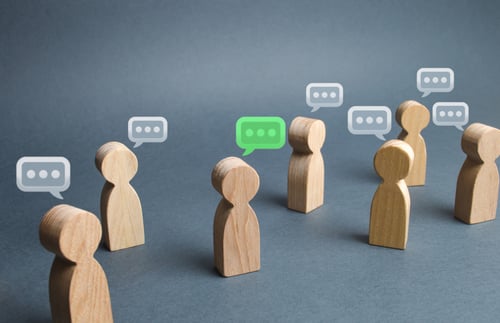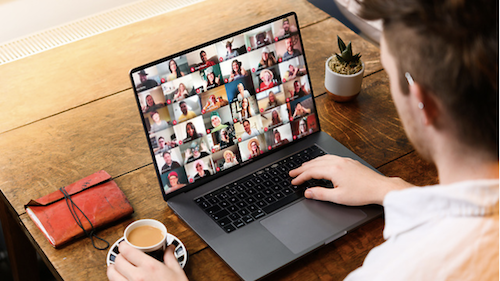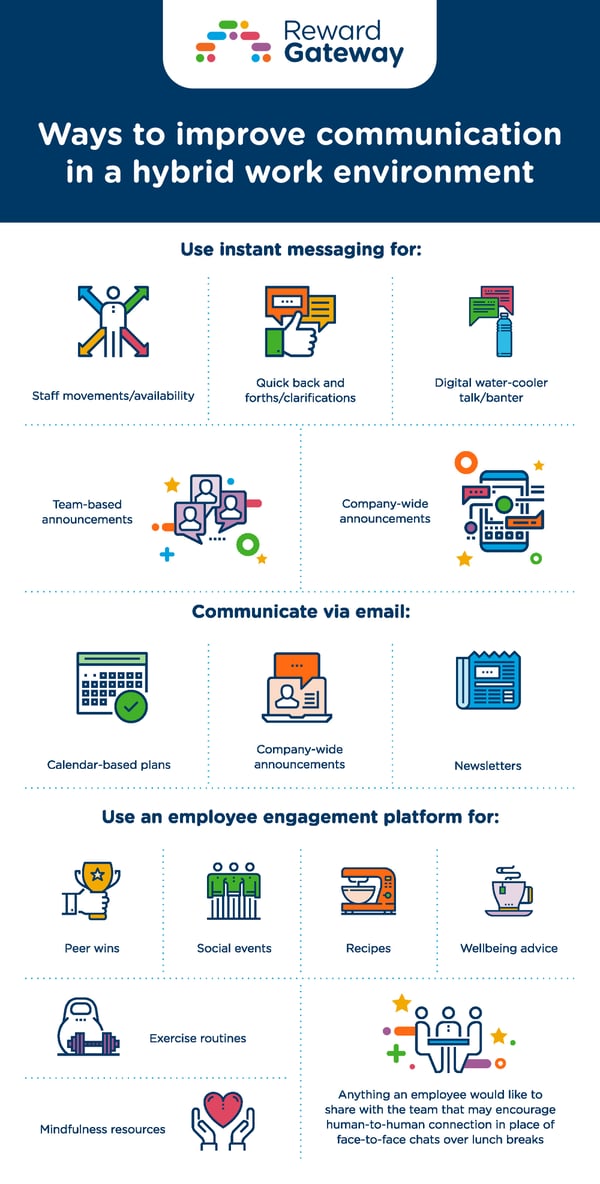Hybrid working environments have become increasingly normalised throughout the 2020s, and in fact, more and more employees are expecting a degree of remote work flexibility in 9-to-5 roles.
As the professional landscape shifts to include less face-to-face time, how can workplaces adapt their communication models to support teams that may not spend much time in the same room?
The Australian Talent & Engagement Report found that 36% of Australian employees frequently feel disconnected from their manager and 29% frequently feel disconnected from their colleagues.
With hybrid working now the norm, companies that don't rethink how they connect and engage their employees may see greater rates of disconnection and miscommunication.
In this blog, we'll explore how Australian companies can overcome these challenges and ensure consistent, collaborative communication for successful hybrid working.
1. Embrace frequent and transparent communication
 One of the key pillars to support effective connection in a hybrid work environment is to embrace frequent and transparent communication. When teams are dispersed, keeping everyone on the same page and informed about the latest developments becomes more complex than organising time in the meeting room.
One of the key pillars to support effective connection in a hybrid work environment is to embrace frequent and transparent communication. When teams are dispersed, keeping everyone on the same page and informed about the latest developments becomes more complex than organising time in the meeting room.
Benefits of frequent and transparent communication:
- Reduces feelings of isolation: Regular updates create a sense of belonging and connection among employees, bridging the gap between physical distances.
- Increases productivity: Clear communication ensures that all team members are aligned with goals, improving efficiency and productivity.
- Builds trust: Transparent communication fosters trust and transparency within the organisation, enhancing employee satisfaction and engagement.
2. Build trust to foster organic and productive communication
 In a digital world, fostering organic and productive communication can be challenging, but it is crucial to maintain a strong sense of camaraderie among team members. According to a study conducted by Pumble, 34% of employees cite transparent communication from leadership as an effective way to increase feelings of connectedness with the larger team. Furthermore, encouraging the trust and communication that builds thriving remote relationships within and outside of an employee’s immediate team may lead to productivity, loyalty and wellbeing benefits, including:
In a digital world, fostering organic and productive communication can be challenging, but it is crucial to maintain a strong sense of camaraderie among team members. According to a study conducted by Pumble, 34% of employees cite transparent communication from leadership as an effective way to increase feelings of connectedness with the larger team. Furthermore, encouraging the trust and communication that builds thriving remote relationships within and outside of an employee’s immediate team may lead to productivity, loyalty and wellbeing benefits, including:
- 61% of people being more likely to stay with the same employer for another year
- 50% of employees enjoying an increase of productivity year on year
- 76% enjoying greater wellbeing overall
Opportunities for meaningful digital interaction between hybrid teams:
- Virtual live Q&As: Conducting live question-and-answer sessions with leaders and managers allows employees to interact directly and address their concerns, just like in-person meetings. The potential to keep this informal can often lead to great insights and conversations borne from comfortability.
- Sharing stories: Encourage employees to share their experiences and success stories through videos or written content, creating a sense of community and inspiration.
- Employee engagement hubs and recognition programs: Employee engagement hubs serve as centralised platforms for employees to connect, collaborate and share ideas, irrespective of their work environment. These hubs can be enriched with engaging content such as articles, videos and interactive forums. Engagement platforms are a great place to host surveys so you can gauge how your team is feeling.
Employee recognition programs play a vital role in promoting a positive work culture. Acknowledging and appreciating employees’ efforts through public recognition reinforces a sense of belonging and boosts motivation at work.
3. Empower hybrid teams to support one another’s wellbeing
Digital platforms create easy-to-access opportunities for sharing and connection. For example, it may be intimidating for somebody to make a presentation to their whole team in person, even if it’s on a fun topic, but it may be easier to upload a written story or share a favourite recipe through an internal comms channel. A dedicated space where employees are encouraged to connect over wellbeing could involve:
- The exchange of recipes, stretching routines, individual or group achievements, mindfulness tips and informal topics.
- Introducing a social functionality within the platform to enable organic interactions, replacing water-cooler talk, where employees can freely share their thoughts, ask questions and provide feedback naturally.
4. Ensure team members receive relevant information where and when they need it
Segmenting communication to reach the right audience, or creating dedicated platforms to host certain information can help employees know where to look for certain types of information, streamlining the efficiency of digital comms among a hybrid team. There are countless models of how this could look, but this infographic shows example comparisons of how to use each form of employee communication:

See how Reward Gateway’s employee communications solution can help you connect and engage your employees by scheduling a quick call with one of our friendly experts.
 Klara Owens
Klara Owens
